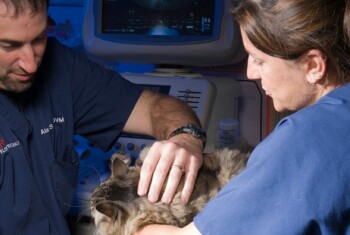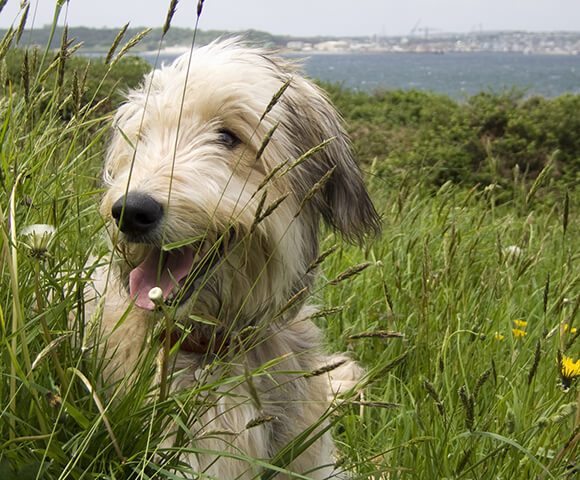Each Labor Day, households across the United States pay tribute to American workers and their many contributions by gathering with friends and family and taking to the outdoors. While Labor Day brings much to celebrate, what many people may not consider during their time spent outdoors are the dangers posed to pets – more specifically, unexpected wildlife interactions.
Each year, BluePearl Specialty and Emergency Pet Hospital, which has 100 practices nationwide, sees an uptick in pets with wildlife derived injuries during the summer and fall months. In fact, BluePearl veterinarians treat a combined 552 animals for porcupine quill foreign bodies/attacks and snake bites annually.
Porcupine attacks and snake bites are quite common at BluePearl Pet Hospitals amid summer and fall months, as people venture outdoors and bring their furry companions along with them. Due to dogs’ natural curiosity, they tend to stick their noses in wildlife dens, or roam into areas where trouble with wildlife can follow,” remarked BluePearl’s Chief Medical Officer, Dr. James Barr. “Porcupine attacks and snake bite cases are both true medical emergencies, and just as with people, the best first aid plan is to get your pet to a veterinary hospital as soon as possible”
Venomous Snake Bites
Snake bites usually happen suddenly. You may hear a rustle in the bushes and a hiss, followed by a sharp yelp as your dog experiences the bite. Most snake bites occur in the face, neck, or legs, and initially are painful. As the toxin spreads, it causes substantial swelling to the bite area and discomfort for the pet. Signs and symptoms of a snakebite will vary depending upon the size of the pet, the amount of venom, and where the bite occurred.
Snake bite symptoms
- Pain
- Local tissue swelling and bruising
- Visible puncture wounds
- Bleeding
- Lethargy and collapse
- Vomiting and diarrhea
After a Snake Bite Occurs
The immediate actions taken after your pet has experienced a snake bite are critical. Be sure to follow these steps.
- Save valuable time by calling a veterinary hospital ahead of your arrival, and also confirm that the hospital has the required antivenin to treat your dog.
- First aid/emergency treatment while seeking veterinary care:
- Locate the bite wound.
- Try to keep your pet calm and still as possible and keep the bite wound below the heart to discourage the spread of venom.
- If your pet stops breathing, follow these instructions on how to administer pet CPR.
The risk of snakebites may be lessened by avoiding areas known to harbor venomous snakes. Unfortunately, cats do not tend to do as well with snakebites due to their small size and location of bites.
Treatment for venomous snakebites, which cannot be bypassed, include IV fluids, antivenin to neutralize the venom, and pain medication. You can expect your pet to stay in the hospital at least 12-24 hours, as they will need to be monitored and administered fluids.
Porcupine Attacks
In the case of a porcupine attack, it is more about what you should not do, rather than what you should do.
Porcupine quills have backwards facing barbs that will continue to push deeper into the tissue over time. This also makes it impossible for them to fall out on their own,” explained Dr. Barr. “As the quills penetrate deeper, they may puncture organs or vital structures so waiting even a day or two to see a veterinarian for removal can be dangerous. Not only does waiting to see a veterinarian result in more pain for the pet, but costs can also increase as procedures involving ultrasound or a CT to locate and remove deep quills may be required.”
Here are a few expert veterinary tips to follow if a porcupine attack occurs.
- Keep your pet as calm as possible. Your pet will want to paw at its face to remove the painful quills, but this will only break the quills or lodge them deeper into the tissue. Try wrapping your pet in a towel to keep them from pawing their face as they are transported to a veterinarian.
- Leave the quills alone. Porcupine quills have microscopic barbs so do not attempt to remove the quills yourself; they must be removed by a professional. Cut or broken quills will only penetrate deeper into the tissue over time, making it more difficult and dangerous to remove later. It is common for dogs to develop lifelong face handling fears from having quills removed without sedation, so be sure to bring the dog in for appropriate care, which includes pain management and possible anesthesia.
- Do not wait to bring your pet into see a veterinarian. Time is truly of the essence when it comes to porcupine quills, as they can penetrate so deep that they can damage lungs, and even the heart (depending on the initial point of entry).
Remember, in these emergency situations the best thing you can do as a pet owner is remain calm, and promptly follow the above steps. Pets can sense panic, which can cause them additional stress.


